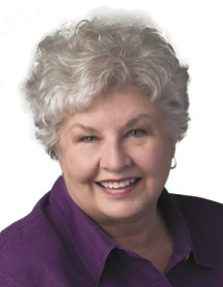
22 Dec 2016 ‘As time goes by’
by Vivian Lawson Hogue
While we were not looking, the ways we’ve watched the passage of time have changed. Ancient timepieces advanced from obelisks, sundials and hourglasses to pendulum clocks. The progression then went to pocket watches, then keywound, atomic and quartz clocks. My sundial is an archaic timekeeper that is somewhat accurate, but doesn’t tell me much on cloudy days or at night! We even make time do our bidding when we follow Daylight Saving Time.
My dad had a pocket watch, as did many men of his era. When they heard the train whistle, he and others took their pocket watches from vests or watch pockets to see if the train was on time or, better yet, if their watches were keeping time! My mother worked for a bank in her youth and she had a watch with an elaborate pin that was attached to her dress front. To others, the face was upside down, but to her, when she lifted its face up it was displayed normally with the numeral 12 at the top.
I grew up with antique pendulum clocks that were wound weekly. Things just didn’t seem right if we didn’t hear the ticking and chiming. In my kitchen window sits a small, wooden 5-minute hourglass with white sand that my mother used for cooking. If longer timing was necessary, she would bring in the keywound bedside clock with an alarm.
The word “time” appears frequently in the Christian Bible. The sun and moon have been here since Genesis, so time has always been a natural presence measured in various ways. There are flowers that bloom at 4 p.m. Moonflowers bloom in the evening hours. The Night-Blooming Cereus blooms at sunset and closes at sunrise only one night a year! My sunflowers smiley-face the eastern sun in the morning and track it all day long until dark. During the night they nod their sleepy faces slowly eastward again to repeat the process.
How do we spend this time we’re given? Some of it is planned or necessary, some is by chance. I recently spent some “by chance” time at Independent Living Services to use their shredding service. The facility receives recyclable materials from Beebe High School, books from Salvation Army, old phone books, newspapers and outdated textbooks from the University of Central Arkansas. They also conduct a shredding service by contract.
Operations manager Carmil Suggs’s gentle nature is evident, as is the sharp sense of humor held by lead employee skills trainer Don Green. They are aided daily by Candace Perry, Ron Davenport, Barbara Moss and Brittany Standridge.
While there, I observed dozens of developmentally disabled adults sitting at tables processing various forms of discarded printed matter to prepare for recycling. Some crumple pages of non-confidential papers and place them in large plastic bags for recycling. Others help operate the shredding machines that do quick work of changing confidential documents into “confetti.” Customers may stay and watch if they wish. The workers are paid by the piece or by the hour. They not only perform a valuable service, but by their diligence, they allow caring family members time to accomplish their own chores or spend a few hours of leisure.
We are given free time and are able to spend it or squander it. We benefit from it or regret its loss. Some individuals use it for rest from work, for personal hobbies or charity. Some spend it jeopardizing their futures with unwise decisions.
Father Time is always portrayed carrying a scythe and a fragile hourglass full of sand. The sand continually slips through its narrow passageway to its destination, then the glass is turned over and the trickle of sand starts anew.
Perhaps that simple invention was given to us to show that we all have many destinations, some planned and some “by chance” before we reach our final destination. And in every case, we’re blessed with a chance to renew ourselves. The best time for that is usually. . .now.
A native of Conway, Vivian Lawson Hogue graduated from the University of Central Arkansas with a degree in art education. A retired teacher, she worked in the Conway School District for 23 years. She is editor of the Faulkner County Historical Society’s semi-annual publication, “Faulkner Facts and Fiddlings.” She can be reached at [email protected].












